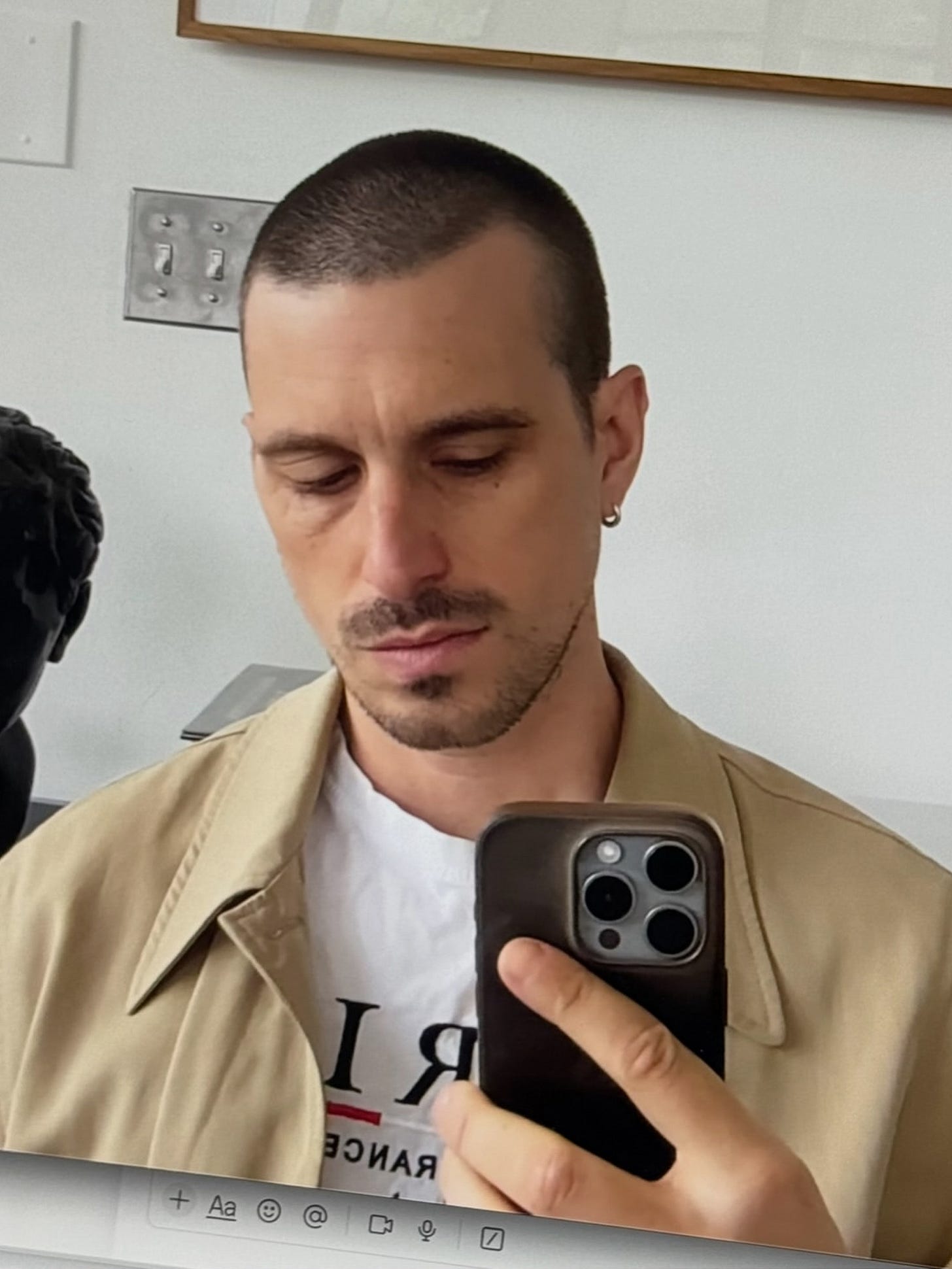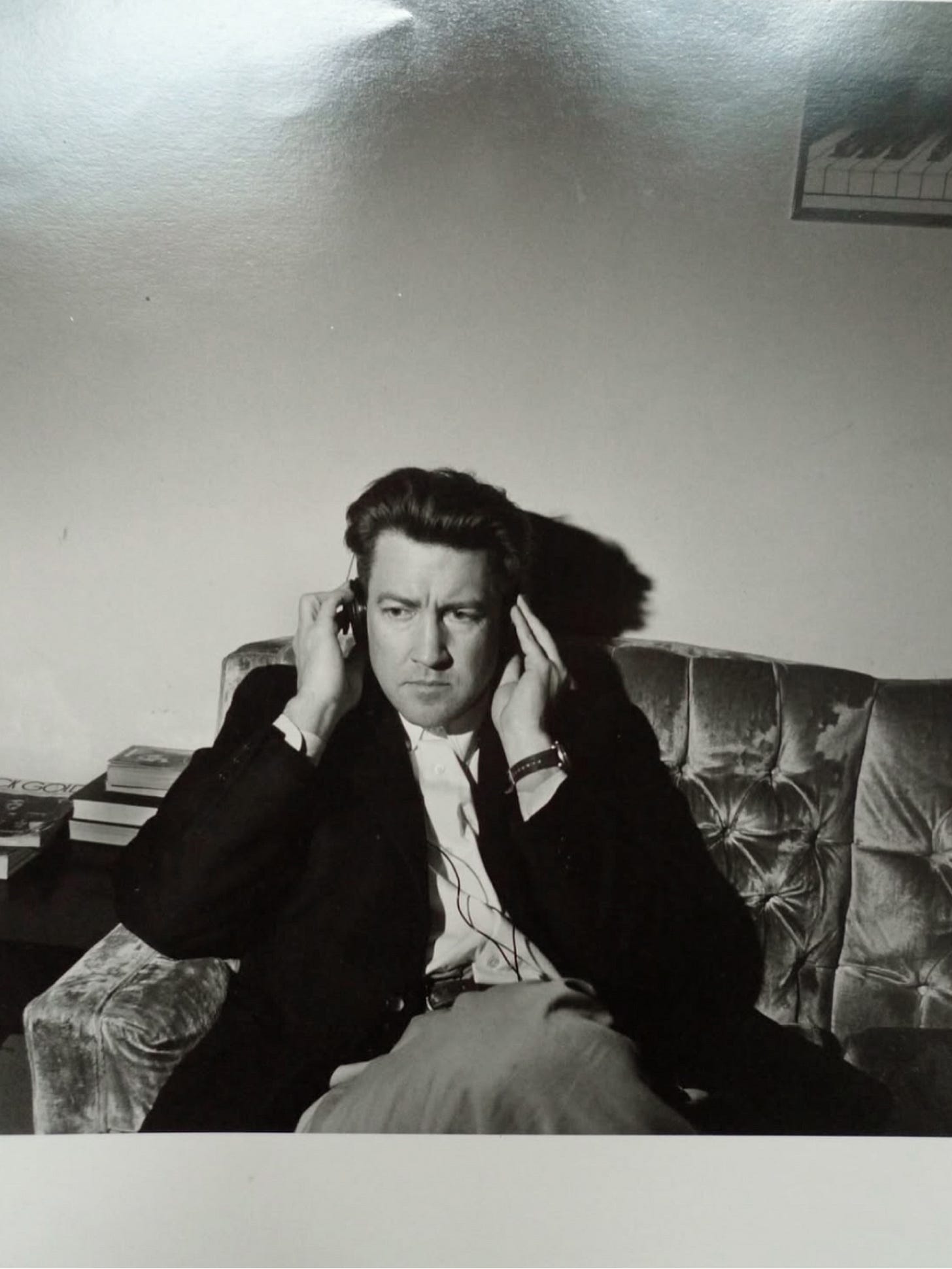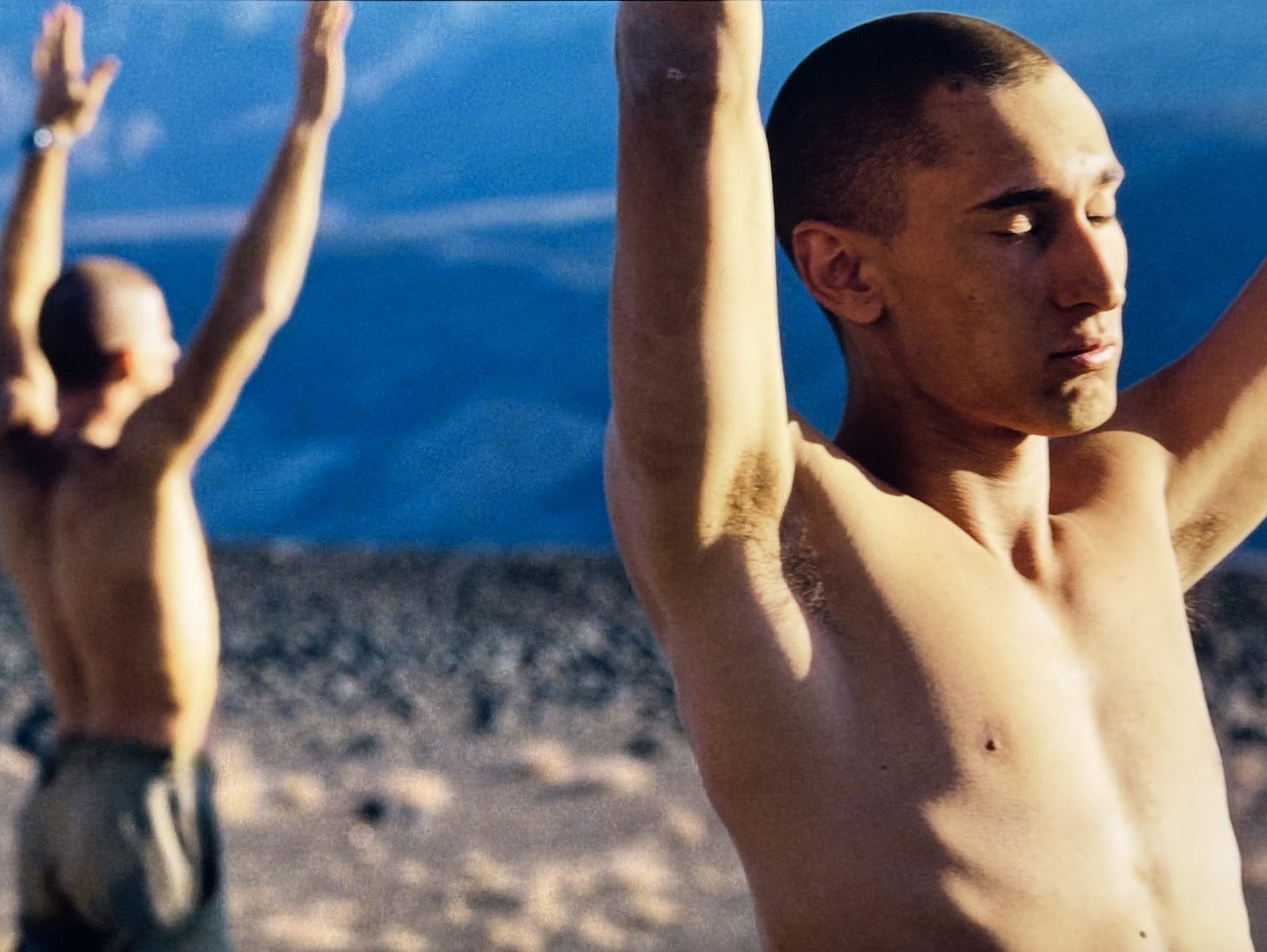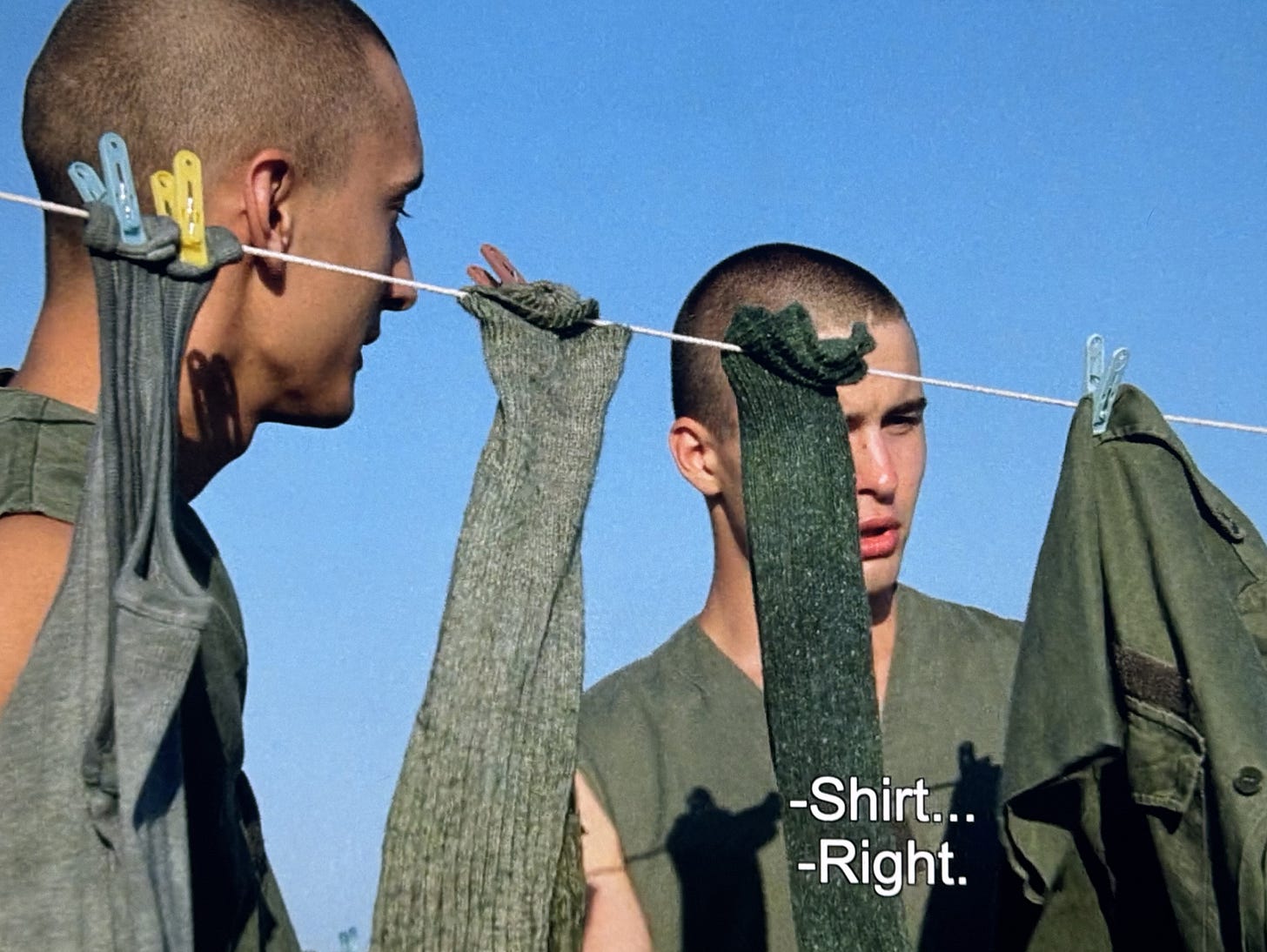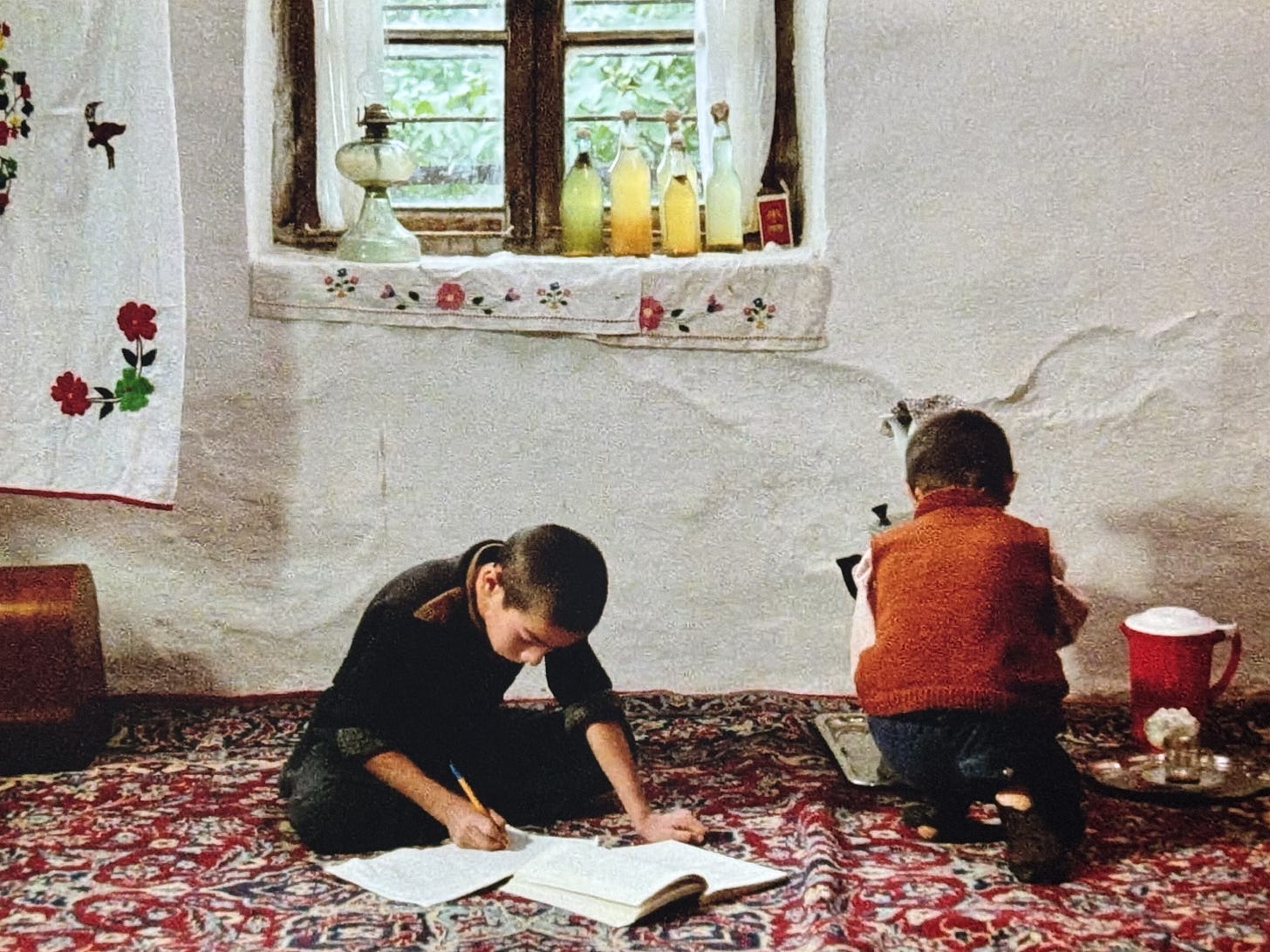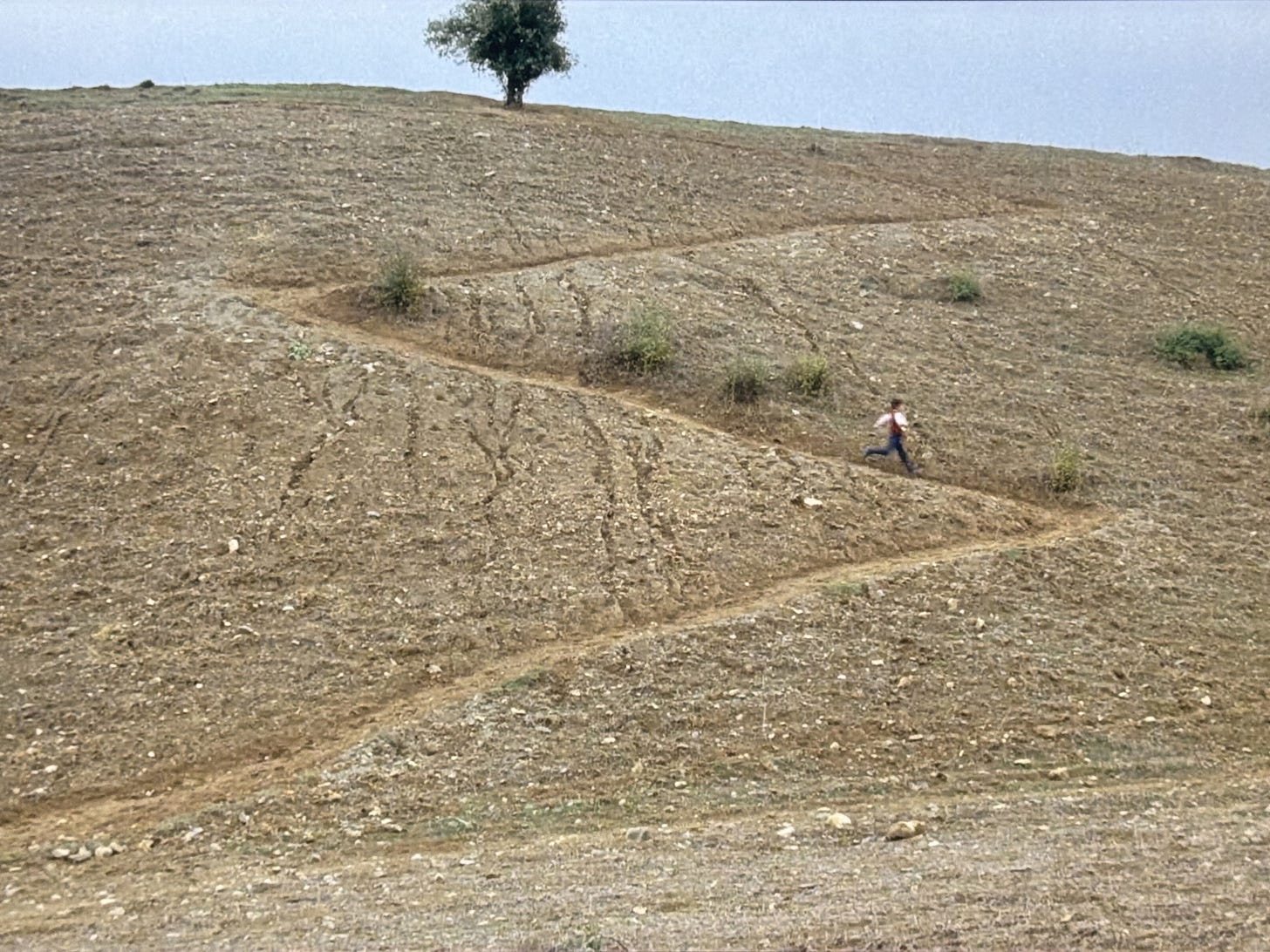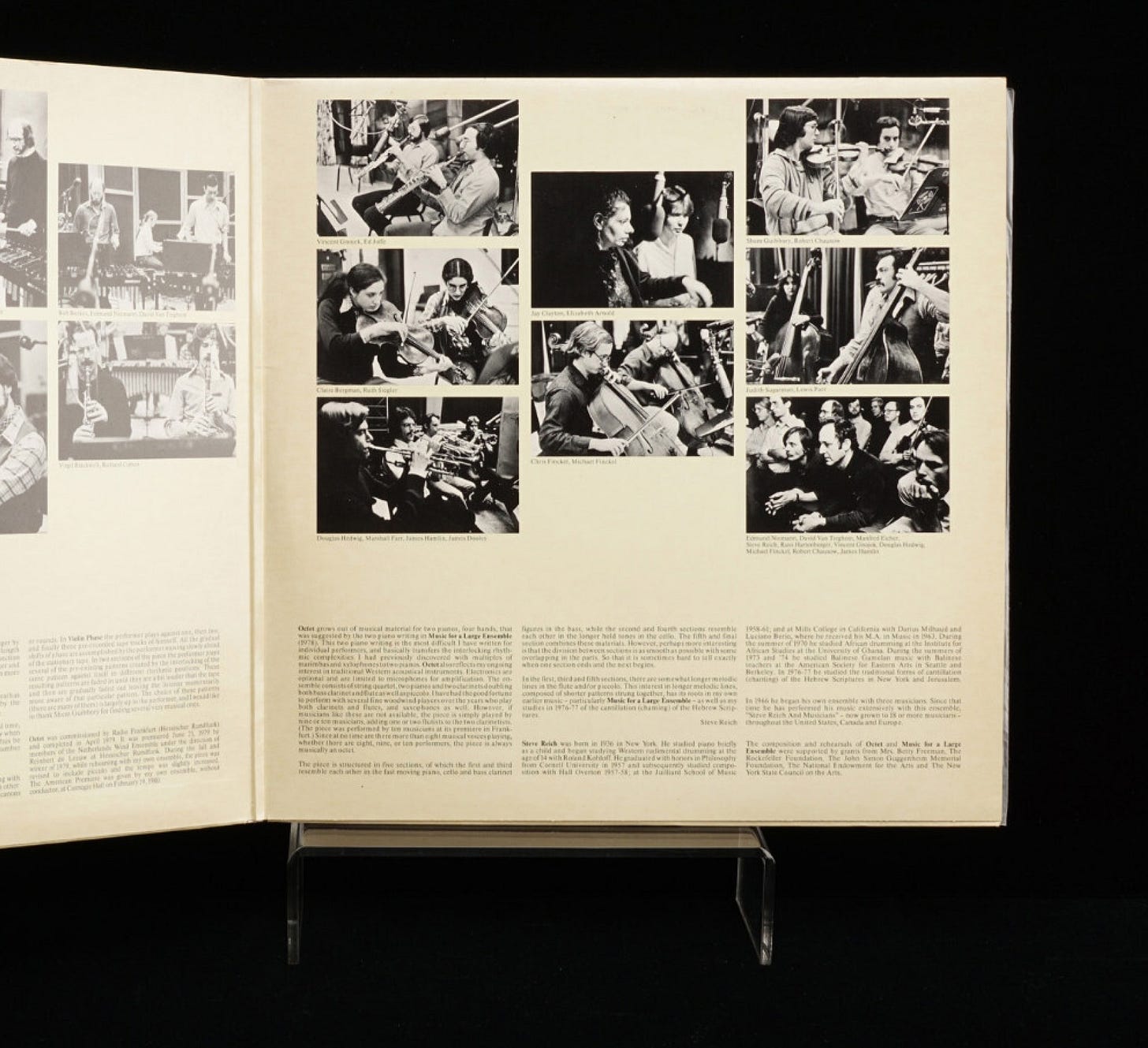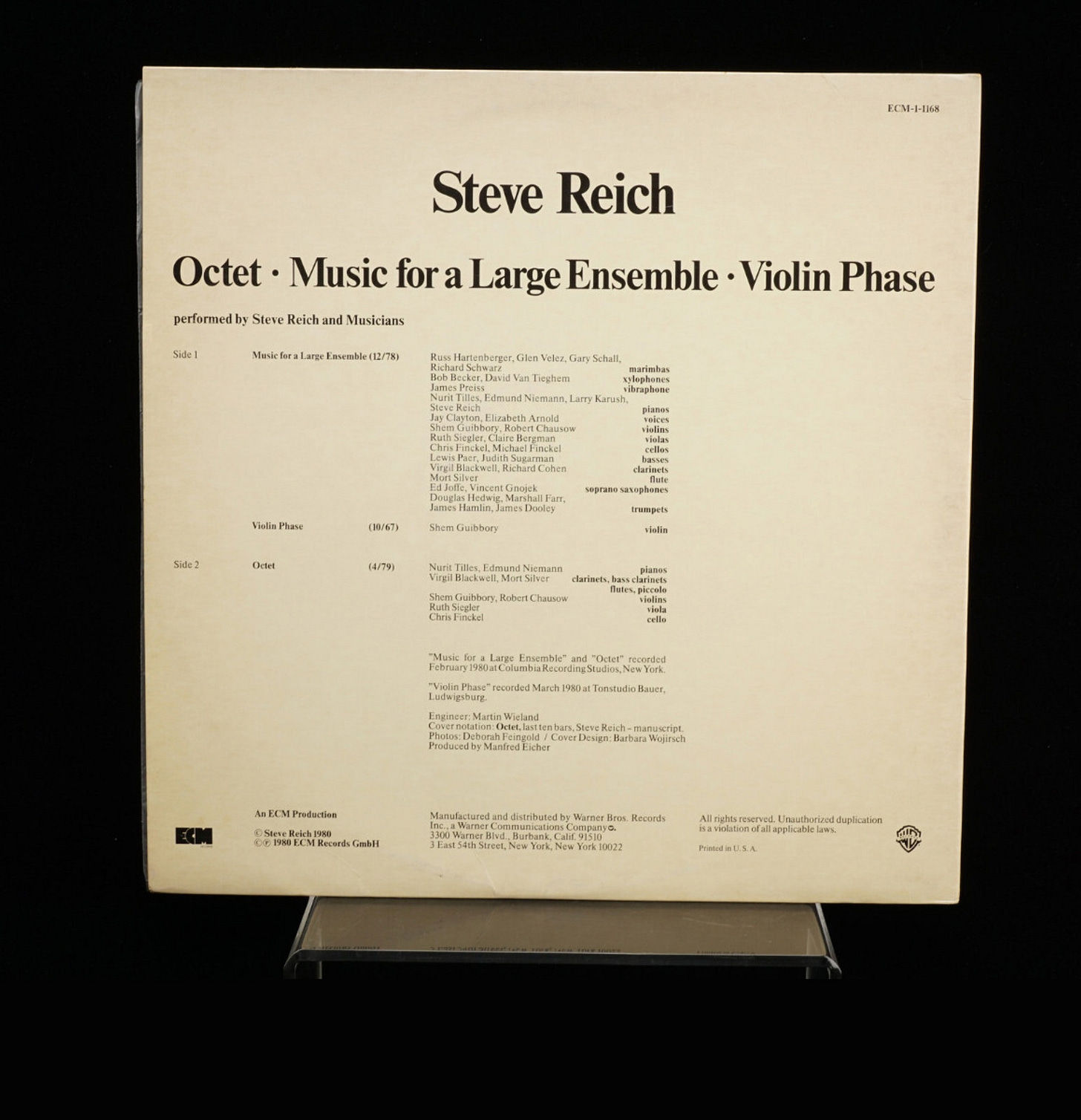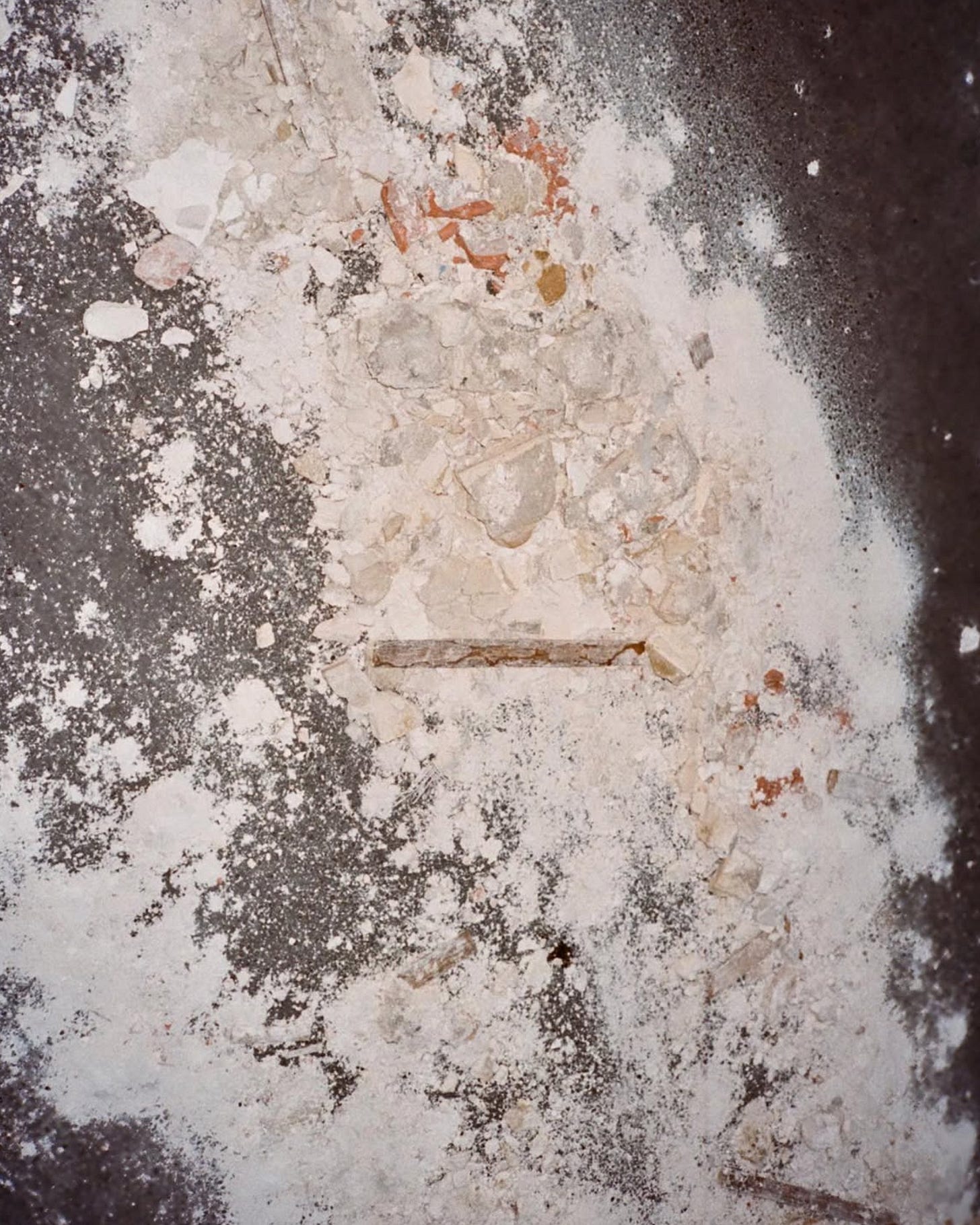No. 89: Andrew J.S.
Catching the Big Fish by David Lynch, shaving your head, Abbas Kiarostami’s Where is The Friend’s House?, Steve Reich's Octet, and keeping somethings to yourself.
Andrew J.S. is a New York-based musician and creative director from Granite Falls, Washington – a small town between Seattle and the Canadian border. Originally a clarinet and saxophone player, Andrew turned to design, photography, and art direction to support his music practice, which eventually led him to co-found a creative studio. Today, Andrew’s focus is on Éditions, the digital publication he founded to explore art, design, and style through the lens of people’s homes, libraries, and personal collections. Raised by musicians with a vinyl collection in the thousands, he’s long been a collector at heart – these days, it’s mostly books that draw him in: “portals into someone’s mind” within reach. From Andrew–
I. a spiritual text
Despite being a lifelong lover of Twin Peaks and David Lynch devoteé (it’s practically a documentary about my hometown, my mom put the theme song on all of our late-night down-the-coast roadtrip mixtapes), I had never read Catching the Big Fish cover to cover until last weekend.
We all know by now that David Lynch was a big dreamer, but his approach to creativity was very practical, rooted in routine. What’s more, his understanding of Eastern spiritual modalities was genuine — not an affect, not Hollywood rehab clinic woowoo.
His ability to communicate these beliefs simply, and his generous way of sharing, is really quite uncommon. Years of picking through thorny gnostic texts or furrowing into the secular catechism of classical philosophy don’t move me as much as an hour in the ocean of pure consciousness with David Lynch.
I can’t help but think, what are the best historical spiritual leaders but great artists, poets thinkers and orators? Between this book and the countless interviews you can watch out there, David Lynch composed a bhagvad gita for our time, Montana’s Thích Nhất Hạnh, the Maharishi of Mulholland Drive.
II. a shaved head
My hair is generally low maintenance, but I recently caught myself thinking a little too much about what to do with it e.g. fine tuning my Irish mullet, growing it back out and tucking it behind my ears again, covering it with a hat. I also couldn’t stop thinking about what’s tied up in hair — culturally, individually, physically, metaphysically — and how much mental energy I’d spent on it over the last year or so.
A dear friend is going through chemo and has lost most of her hair. The way she faced this sudden balding with humor and bravery really put my concerns in perspective. After a few months of indecision, she gave me the courage to see what’s underneath.
Shaving your head is very freeing, and there are so many reasons to do it. Whether it’s your Sinead moment, an infinite loop between punk and monk, or in my case, a fateful Beau Travail rewatch, falling in line with the legionnaires, there’s an inescapable feeling of truth in the ascetic aesthetic, nothing to hide behind, nothing left to say.
I do understand that shaving your head is a statement unto itself, depending on what it might mean for you or the culture you belong to. But for me the physical sensation is the real appeal. Over the last few weeks I’ve also enjoyed a particular closeness to the natural world that I haven’t experienced in decades, or maybe ever — the sun reaching my hairline, the wind rushing over my head on the bridge at night.
Someday I might look back and see this as an episode in a lifelong hair journey, but for now I’m enjoying the freedom and focus. Hard recommend.
III. a film
I recently found myself watching Iranian director Abbas Kiarostami’s films for the first time. I was cruising Criterion, chasing a feeling I couldn’t find, trying too hard to replicate some other cinematic experience I recently had. I was frustrated, and I wanted to be moved — I wanted to feel something.
Somehow I wound up reading the synopsis of Where is The Friend’s House?, the first of three movies I would watch that weekend. I took a chance and hit play without any recommendations from friends, Letterbox lists or Google audience reviews — a streamer’s leap of faith.
What a fateful thing to have happened. WITFH? immediately secured a place in my personal pantheon alongside Beau Travail, Mulholland Drive, The Color of Pomegranates, etc.
In an era where indie films and their stars want you to know how serious and beautiful they are, hamfisted attempts at Cannes laurel grabs and tedious follower-count-casted retellings of dusty IP that nobody wanted to hear about ever again, it was so refreshing to see how Kiarostami’s 1987 reveals the sublime in the everyday without effort or pretense.
The premise is simple (as told by Criterion here): A boy searches for the home of his classmate whose school notebook he has accidentally taken, zigzagging determinedly across two towns, aided (and sometimes misdirected) by those he encounters, his quest becomes both a revealing portrait of rural Iranian society in all its richness and complexity and a touching parable about the meaning of personal responsibility.
And for the record, the film is breathtaking to look at, with the sparest but most deliberate choices in style, color and composition — it made my heart absolutely sing. To me, a perfect movie.
IV. a song
I’m a longtime admirer of Steve Reich, dating back to teenage years — some liner note hopping and crate digging based on my parents’ excellent collection of jazz and classical LPs — but only in the last seven or so years has his music really taken hold for me, none more than this incredible piece, Octet.
Released by ECM in 1980 on Octet/Music for a Large Ensemble/Violin Phase, this composition packs the breathtaking industry and surging emotion of his larger works into just 17 minutes and 29 seconds. It’s not as well-known as Music for 18 Musicians, Different Trains or Tehilim, but for me it’s the ultimate expression of his artistry.
Some key moments and sensations I enjoy:
Listen to when the clarinet player (Virgil Blackwell) switches from his Bb (that’s B Flat) clarinet to his bass and begins doubling the basses just after the two-minute mark — I feel it in my bones, full body goosebumps.
I could live in the aching harmonies of ~4:20-6:40 and its sister section from ~11:54-13:30 — they just physically make me cry, and the soprano saxophone sounds so beautiful in the latter!
When the optimistic bunny hop and longtone lydian lift of the midsection [7:22 onward] plunges into its relative minor at 10:17, the sustained feeling of cloudbreak gives way to underlying mechanical menace — it feels super exhilarating to have both of those colors next to each other. (You have to listen at least from the 7:22 on for the full effect, hopefully while listening to the entire thing).
The piece is in 5/4 which is not so hard for some people to feel (often studied musicians or those from cultures that traditionally have odd-metered or polyrhythmic music), but it can be a bit of an ear-body puzzle for others. Fortunately there is a vertical construction to the piece that works almost like the experience of sitting alongside a river or big body of water — you can watch the sparkle and ripples dance on the surface, or feel the big currents underneath, and perceive everything in between just by being present with it. You don’t have to know how it all works to marvel at its existence.
The sound of it all, it’s a timbral masterpiece and marvel of orchestration.
The album artwork is outstanding, even by ECM standards. Love the tightly spaced Times New Roman and no-nonsense visual concept — just perfect. Shockingly I don’t have a copy, but I’m enjoying these oddly beautiful eBay listing photos for now.
V. a secret
I was going to say going for a run or walk here, but realized I don’t have a lot to add to what most of us already know intuitively about running or walking, or even going for a drive. As the digital demands of life and work get heavier, these moments in motion are the only time I really feel free (unless I’m behind a bass clarinet). It’s like a meditation — the body and the senses come alive, the mind clears and the ideas flow. It’s fantastic. Anyway, a recent walk without my phone led me to this thought:
Keeping things to yourself really feels good. Seeing something and not taking a picture of it, thinking something and not saying it, wanting something and letting it go instead, watching a movie and not posting it to IG stories (guilty). A pernicious side effect of having any sort of profile to post on or a Substack to write into is the pressure to be on the lookout for stories, seeing everything as content. Maybe I just got caught up in doing other stuff, but not doing any of that is my new favorite thing.
That said, you can catch the Éditions newsletter every Friday at 10:15a New York time :)
BULLETIN
Los Angeles
On view: Oliver Clegg’s Always Right, Sometimes Left opens tonight at Journal Gallery. Justin John Greene’s Particular Dish opens tomorrow at Matthew Brown. Hannah Lee’s Dumbo’s Feathers opens Saturday at James Fuentes. Lucas Rubly’s Monumentos à Memória opens Saturday at Sea View. Noah Davis survey opens Sunday at the Hammer. Kaoru Ueda at Nonaka Hill. Richard Diebenkorn: The 1993 Portfolio at Gemini G.E.L. Adam Silverman’s Seeds and Weeds, Tomoo Gokita’s Naked, Sarah Rosalena’s Unending Spiral, Wilhelm Sasnal’s AAAsphalt at Blum. Mungo Thomson’s Time Life and Nathaniel Oliver’s A Tension Worth Keeping Because the Drift is Always There at Karma. Alan Lynch’s Infinitely on the Surfaces of This Teardrop World at Chateau Shatto. Henry Churchod’s Rome Is No Longer in Rome at Clearing. JJ Manford’s Jacaranda June at Nazarian/Curcio. Maria Calandra’s Time is No Fairytale at Half Gallery. Mary Weatherford’s The Surrealist at David Kordansky. Group show The Abstract Future at Jeffrey Deitch. Group show Flower Hour at Authorized Dealer. Greta Waller’s 3 a.m. at Fernberger. Cataclysm: The 1972 Diane Arbus Retrospective Revisited at David Zwirner. Gustave Caillebotte: Painting Men at The Getty.
New York
On view: Koichi Sato’s Adolescent Sanctuary opens tonight at 56 Henry. Diane Arbus: Constellation at opens today at the Park Avenue Armory. Isabella Ducrot’s Visited Lands opens tonight at Pretzel. Carolina Fusilier’s Imago opens tomorrow at Margot Samel. Jenny Calivas: Self Portraits While Buried and Maria Antelman’s Conjurer open tonight at Yancey Richardson. Lorna Simpson’s Source Notes at The Met. Group show Lucid Apparitions at Lyles and King. Lena Henke’s The City Transformed at 55 Walker. Love and Butterfly — an exhibition of works by Corita Kent — at Andrew Kreps. Toshiko Takaezu’s Bronzes at James Cohan. Alexis Ralaivao’s Éloge de l’ombre at Kasmin. Semiotics of Dressing at Jacqueline Sullivan. Austin Weiner’s Half Way Home at Levy Gorvy Dayan. Nick Goss’ Stations at Matthew Brown. Group show Circa 1995 at Zwirner. Martha Diamond: After Image at David Kordansky. Randy Wray’s Prehistory at Karma. Leiko Ikemura’s Talk to the Sky, Seeking Light at Lisson. Salman Toor’s Wish Maker at Luhring Augustine. William Kentridge’s A Natural History of the Studio and Eternal Beginnings: Francis Picabia at Hauser & Wirth. Bill Jensen’s A Room of Wisdom at Amanita. Sargent and Paris at The Met. Ludmilla Balkis’ Grasp the Mountains, Then Let Them Go at Guild. Yu Nishimura’s Clearing Unfolds at David Zwirner. Picasso: Tête-à-tête at Gagosian. Claes Oldenburg and Peter Moore’s New York Streets and Signs at Paula Cooper. Jack Whitten: The Messenger at MoMa. The Human Situation with works by Maria Marcus, Alice Neel, and Sylvia Sleigh at Lévy Gorvy Dayan. Louise Nevelson’s Collection View at The Whitney.
Affection Archives is a weekly look into the affections of yours truly (Arielle Eshel) & people I admire.




